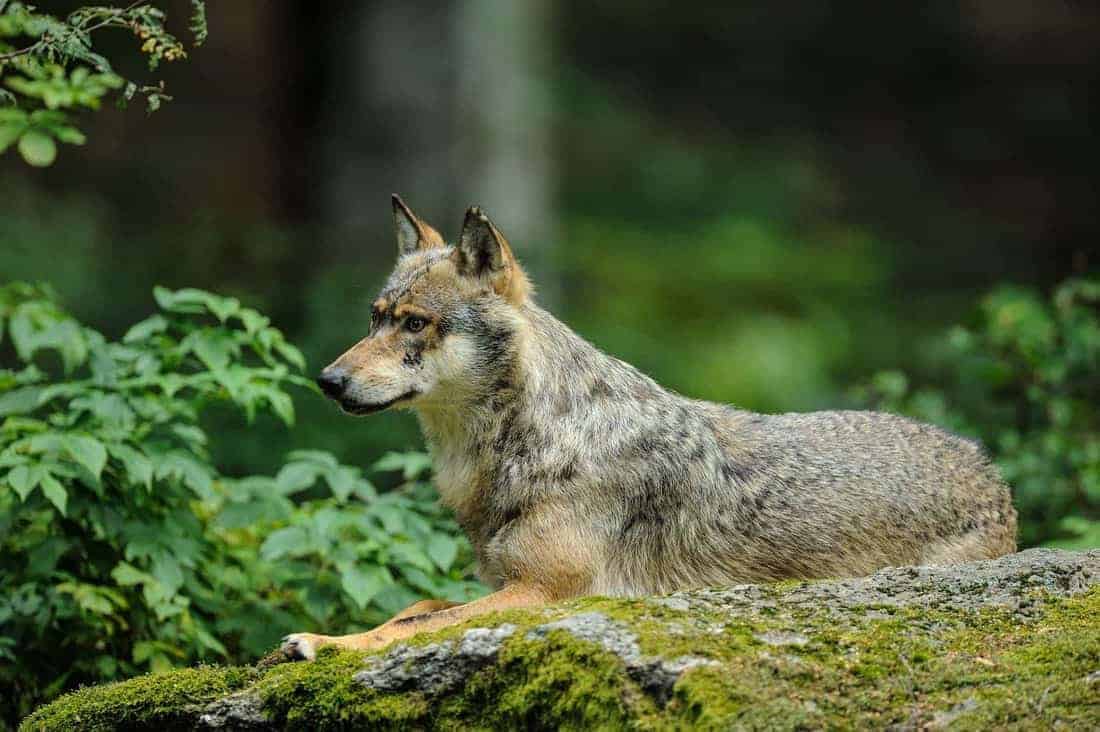Today is International Wolf Day
One of the most successful conservation stories in Europe is the natural return of the wolf to many countries. In some areas of Europe there have always been stable populations. Yet, in the majority of countries the wolf had disappeared as a consequence of human persecution. Due to increases in their prey and forest cover and favourable legislation, wolf populations have developed rapidly. This brings positive effects for nature in many places, but also causes concern amongst people. Wolves sometimes prey on livestock like sheep and cattle, therefore there has been a conflict with humans for centuries. On International Wolf Day we want to highlight what role wolves have in the ecosystem, and how we can work towards a sustainable future to coexist with this species.
Please also read: Let’s not talk about the wolf on International Wolf Day
Bringing ecological balance
Many scientists have studied the wolves’ impact on ecosystems. The famous example from Yellowstone shows how ungulate behaviour changed due to the wolf presence. As a result, a landscape transformation took place. Another example is the relation between wolves and swine fever, best studied in Slovakia. The wolves take out the sick individuals, halting the spread of the disease and preventing further outbreaks. Another study found that wolves also reduce the spread of tuberculosis amongst wild boar, by preying on infected individuals. It is thus for a good reason that some call them ‘the doctors of the wild’.
Our multilingual poster Wolves restore nature’s balance in Europe illustrates in an understandable way how the wolf can be a natural solution to different environmental challenges. The wolf keeps the number of foxes and golden jackals under control, allowing their prey (birds and rodents) to grow in population size. By taking out deer, the wolf ensures that areas along rivers become less overgrazed. This is beneficial for other species, such as the beaver. Beavers can build dams, which provide a suitable habitat for a wide variety of other species. Furthermore, left-overs of wolf-kills provide the scavengers with food. And the increased numbers of wild boar, damaging the farm fields, are able to decrease as the wolf is almost the only natural enemy. As the poster represents the situation on a European scale, it can differ on a regional and local level.
Human conflicts over wolves
The European Union has declared a strictly protected status of the wolf. Yet, EU countries determined what this status practically implies by including the species in different Annexes of the Flora and Fauna Habitats Directive. Therefore, countries like Slovakia, as well as regions of Spain can still legally cull wolves to a certain level. Yet, even Spain stopped the wolf culling activities last season. In the meantime, illegal killing of wolves continues to happen in many other countries.
But what happens when wolves leave natural protected areas, wandering near human settlements? It is a question that has kept many people occupied lately. Humans are continuously degrading natural habitats for wolves and other species. Logging of forest, expanding agricultural lands, and urbanisation cause a rapid decline of natural places. Therefore it inevitable that wolves moves out of their natural habitat in search of new territories. Yet, by doing so, the animals often end up in human settlements, which potentially causes conflicts between people and wildlife. The EU Court of Justice recently published a press release how to treat strictly protected animals, like the wolf, that stray into human settlements.
Working towards coexistence
The key question is therefore, how humans are able to mitigate conflicts and work towards coexistence with wolves and other wildlife. For example in 2018, the European Wilderness Society participated in the workshop of the EU Platform on Coexistence between People and Large Carnivores. The workshop covered current uses of EU funding to support human-large carnivore coexistence and prevent the depredation of livestock. The workshop resulted in a series of recommendations for how organisations can use EU funding to support local communities and prevent livestock depredation. To minimise a human-wildlife and a human-human conflict, people should apply the following recommendations:
- Simplify the application process so that forms are easier to fill in for individual farmers.
- Increase support to include cost of maintenance and additional work as well as the cost of equipment.
- Reduce the number of tools used to support coexistence.
- Communicate the requirements for financial support more effectively.
- Engage local champions, who are able to provide advice, training and support to potential beneficiaries.
- Communicate clearly to political parties the presence of large carnivores and the need for prevention measures.
As announces earlier this week, the European Union approved the largest and most ambitious livestock protection project in the German-speaking region of the Alps. This means that over the course of the next five years, the EU will co-finance an investment of approximately €5M in livestock protection training, measures and improvements. As a result, the project aims to reduce human-wildlife conflicts, specifically concerning wolves and livestock depredations, and contribute to a long-term sustainable coexistence with wildlife. For more information about the LIFEstockProtect project, click on the link below.










